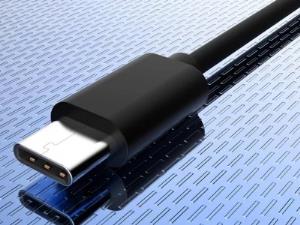



Date:04/09/19
 The USB Implementers Forum (USB-IF) announced today that the organization has finalized the technical specifications for USB4. These specs will be making their way to designers, engineers and manufacturers shortly, meaning we can expect the first USB4 products to hit shelves some time in 2020. The highlight of the new standard is its dual-lane 40Gbps speed, matching Thunderbolt 3's transfer rate and doubling that of USB 3.2's.
The USB Implementers Forum (USB-IF) announced today that the organization has finalized the technical specifications for USB4. These specs will be making their way to designers, engineers and manufacturers shortly, meaning we can expect the first USB4 products to hit shelves some time in 2020. The highlight of the new standard is its dual-lane 40Gbps speed, matching Thunderbolt 3's transfer rate and doubling that of USB 3.2's.
USB4 will use the same form factor as USB type-C and will be backward compatible with USB 3.2, USB 2.0, and Thunderbolt 3. In other words, you'll be able to use just about any existing USB type-C device with a machine featuring a USB4 bus. The new connection will be similar to USB3 in that it will support both data and display protocols, so expect to see more monitors feature USB connections in addition to HDMI ports.
The dichotomy between USB3 and Thunderbolt 3 has been frustrating for consumers; while USB3 is a ubiquitous connection, it transfers data at half the speed (at best) of the rather elusive Thunderbolt 3. USB4 will essentially merge the two standards, creating a two-lane 40Gbps connection that will (hopefully) become a unified connection across devices and platforms.
The 40Gbps transfer rate of Thunderbolt 3 has been a boon for creative professionals and power users, allowing for streamlined video editing, animation and modeling workflows. It has also enabled the introduction of new product categories such as external GPUs. Having the speed of Thunderbolt 3 as a universal connection will bring these capabilities to everyday consumers, making data backups and transfers a faster and easier experience.
USB4 devices are clear to roll out next year
 The USB Implementers Forum (USB-IF) announced today that the organization has finalized the technical specifications for USB4. These specs will be making their way to designers, engineers and manufacturers shortly, meaning we can expect the first USB4 products to hit shelves some time in 2020. The highlight of the new standard is its dual-lane 40Gbps speed, matching Thunderbolt 3's transfer rate and doubling that of USB 3.2's.
The USB Implementers Forum (USB-IF) announced today that the organization has finalized the technical specifications for USB4. These specs will be making their way to designers, engineers and manufacturers shortly, meaning we can expect the first USB4 products to hit shelves some time in 2020. The highlight of the new standard is its dual-lane 40Gbps speed, matching Thunderbolt 3's transfer rate and doubling that of USB 3.2's.USB4 will use the same form factor as USB type-C and will be backward compatible with USB 3.2, USB 2.0, and Thunderbolt 3. In other words, you'll be able to use just about any existing USB type-C device with a machine featuring a USB4 bus. The new connection will be similar to USB3 in that it will support both data and display protocols, so expect to see more monitors feature USB connections in addition to HDMI ports.
The dichotomy between USB3 and Thunderbolt 3 has been frustrating for consumers; while USB3 is a ubiquitous connection, it transfers data at half the speed (at best) of the rather elusive Thunderbolt 3. USB4 will essentially merge the two standards, creating a two-lane 40Gbps connection that will (hopefully) become a unified connection across devices and platforms.
The 40Gbps transfer rate of Thunderbolt 3 has been a boon for creative professionals and power users, allowing for streamlined video editing, animation and modeling workflows. It has also enabled the introduction of new product categories such as external GPUs. Having the speed of Thunderbolt 3 as a universal connection will bring these capabilities to everyday consumers, making data backups and transfers a faster and easier experience.
Views: 396
©ictnews.az. All rights reserved.Similar news
- Azerbaijani project to monitor disease via mobile phones
- Innovative educational system to be improved under presidential decree
- NTRC prolongs license of two TV and radio organizations for 6 years
- Azerbaijan establishes e-registry for medicines
- Azerbaijani museum introduces e-guide
- Nar Mobile opens “Nar Dunyasi” sales and service center in Siyazan city
- International conference on custom electronic services held in Baku
- OIC secretary general to attend COMSTECH meeting in Baku
- Azerbaijan develops earthquake warning system
- New law to regulate transition to digital broadcasting in Azerbaijan
- Azerbaijani State Social Protection Fund introduces electronic digital signature
- Intellectual traffic management system in Baku to be commissioned in December
- Tax Ministry of Azerbaijan started receiving video-addresses
- World Bank recommends Azerbaijan to speed up e-service introduction in real estate
- Azerbaijan to shift to electronic registration of real estate





















